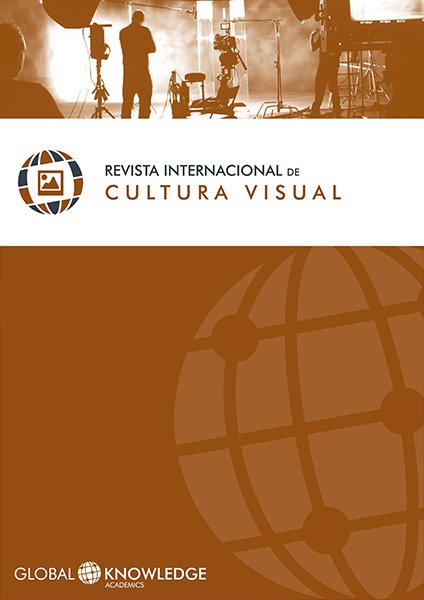Transits of Imagetic: The Reconfiguration of Female Old Age in Contemporary Brazilian Cinema
DOI:
https://doi.org/10.37467/gka-revvisual.v1.637Keywords:
Cinema, Image, Old Aged WomanAbstract
This article aims to establish a relationship between gender studies, cinema and representations regarding the female starring aging processes in contemporary Brazilian cinema. The corpus of the analysis posted to this article falls into three feature films that have the same characteristics in common: a) were produced in the same decade; b) are representatives of the new Brazilian cinema; c) have international awards and commercial success and d) have the old age and the female aging process as the main theme of the narrative argument. For this question, the following films were selected: Stop Missing (2008) Lais Bodanszky, Durval Records (2002) Ana Muylaert e Across the Road (across the Street; 2004) Mark Bernstein. Growth of the female role is observed in the films dedicated to the theme of female aging, referring to new imaginary and ways of experiencing the affections and the conformation of the image ...
Downloads
Global Statistics ℹ️
|
476
Views
|
275
Downloads
|
|
751
Total
|
|
References
Aumont, J. (1995). A estética do filme. Campinas, São Paulo: Ed. Papirus.
Aumont, J. (2004). O olho Interminável. São Paulo: Cosac e Naify.
Aumont, J. e Michael, M. (2004). Análise do filme. Lisboa: Edições Texto e Grafia.
Beauvoir, S. (1990). A Velhice. Rio de Janeiro: Nova Fronteira.
Bosi, E. (1987). Memória e Sociedade. Lembranças dos velhos. São Paulo: EDUSP.
Burch, N. (2006). A Práxis do Cinema . São Paulo: Perspectiva.
Butler, J. (2003). Problemas de gênero: Feminismo e subversão de identidades . Rio de Janeiro: Civilização Brasileira.
Caldas, R. e Montoro, T. (2006). A Evolução do Cinema Brasileiro no século XX . Brasília: Casa das Musas.
Casseti, F. e Di Chio, F. (2001). Cómo Analizar um Film . Barcelona: Paidós.
Hall, S. (2006). Da Diáspora: Identidades e Mediações Culturais . Belo Horizonte: ed. UFMG.
Jameson, F. (1991). Posmodernism or the cultural Logic of late capitalism . New Orleans: Tulane Press. DOI: https://doi.org/10.1215/9780822378419
Kehl, M.R. (1996). Cinema e Imaginário. Em I. Xavier (org.), O Cinema no Século. Rio de Janeiro: IMAGO.
Lastoria, L.A.C.N. (1995). Ética, estética e cotidiano . Piracicaba: UNIMEP.
Maffesoli, M. (2001). O imaginário é uma realidade. Revista Famecos, 15, pp. 74-82.
Montoro, T. (2009). Velhices e Envelhecimentos na cinematografia mundial. Em M.L. Mendonça (org.), Mídia e Diversidade Cultural. Goiânia: Editora Casa das Musas.
Morin, E. (1976). O cinema ou o homem imaginário . Lisboa: Moraes Editora.
Morin, E. (2001). El cine o hombre imaginário. Barcelona: Paidós.
Mulvey, L. (2005). Reflexões sobre prazer visual e cinema narrativo. Em F. Rams (org.), Teoria Contemporânea do Cinema. São Paulo: SENAC.
Orlandi, E.P. (2007). As formas do silêncio: no movimento dos sentidos . Campinas: Editora Unicamp. DOI: https://doi.org/10.7476/9788526814707
Xavier, E. (2007). Que corpo é esse? O corpo no imaginário feminino . Florianópolis: Ed. Mulheres.
Downloads
Published
How to Cite
Issue
Section
License
Copyright (c) 2014 Revista Internacional de Cultura Visual

This work is licensed under a Creative Commons Attribution-NoDerivatives 4.0 International License.
Those authors who publish in this journal accept the following terms:
-
Authors retain copyright.
-
Authors transfer to the journal the right of first publication. The journal also owns the publishing rights.
-
All published contents are governed by an Attribution-NoDerivatives 4.0 International License.
Access the informative version and legal text of the license. By virtue of this, third parties are allowed to use what is published as long as they mention the authorship of the work and the first publication in this journal. If you transform the material, you may not distribute the modified work. -
Authors may make other independent and additional contractual arrangements for non-exclusive distribution of the version of the article published in this journal (e.g., inclusion in an institutional repository or publication in a book) as long as they clearly indicate that the work was first published in this journal.
- Authors are allowed and recommended to publish their work on the Internet (for example on institutional and personal websites), following the publication of, and referencing the journal, as this could lead to constructive exchanges and a more extensive and quick circulation of published works (see The Effect of Open Access).













